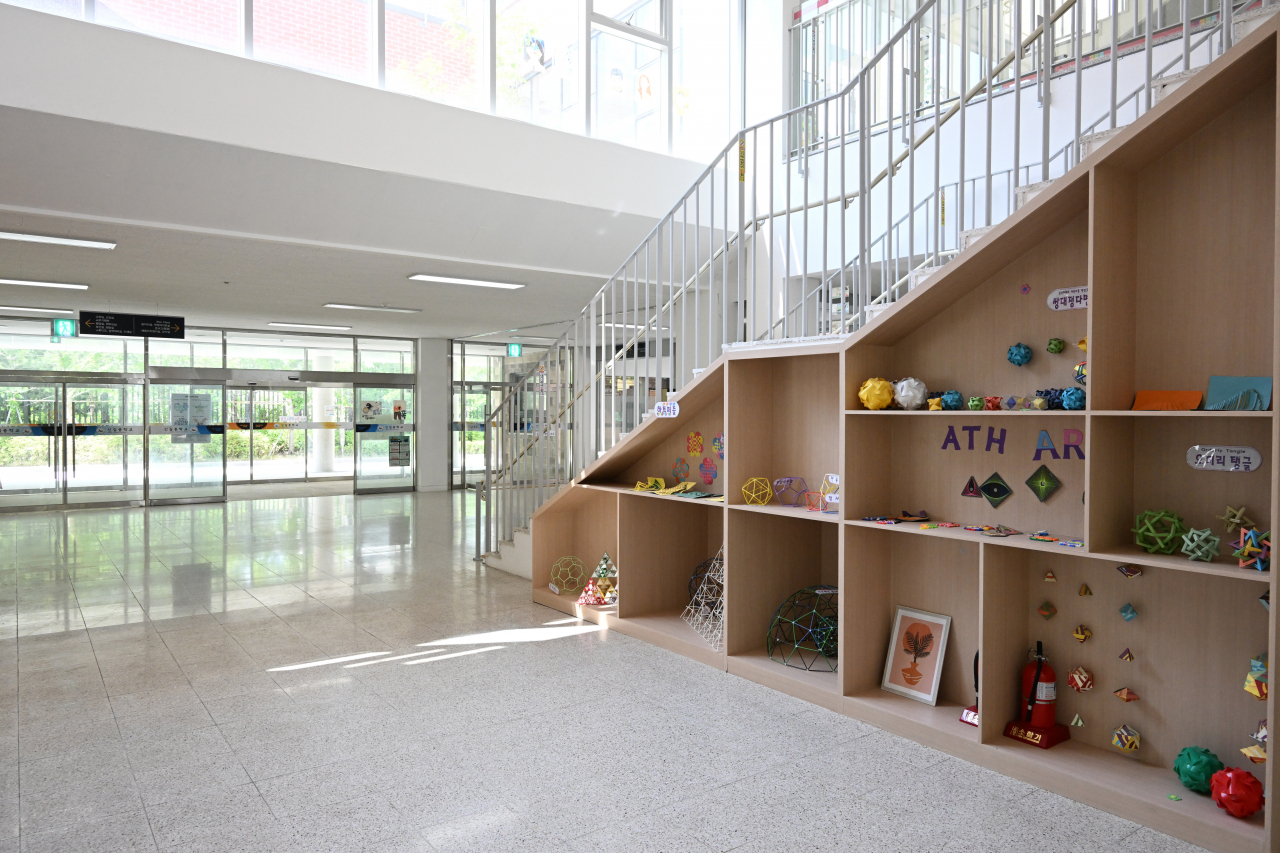 |
Light streams in through windows to the lobby of Singil Middle School in Seoul. (Im Se-jun/The Korea Herald) |
Sunlight streams into the school library from a small courtyard where students can sit outside with a book during breaks. The courtyard is among 19 such spaces in Singil Middle School, which opened two years ago in southwestern Seoul.
As soon as the bell rang indicating a 15-minute recess, students headed to the courtyard on the second floor, where a snack vendor market sold drinks, chips and other small snacks. Other students got started on homework in another courtyard, while taking in the fresh air.
Running into strangers, the students did not hesitate to greet them and strike up a conversation.
“The students seem very cheerful at this school in general. I think that is partly because the school has many (indoor) spaces connected to outdoor spaces,” said Shin Moon-seob, vice principal of the school, while giving a tour on May 19.
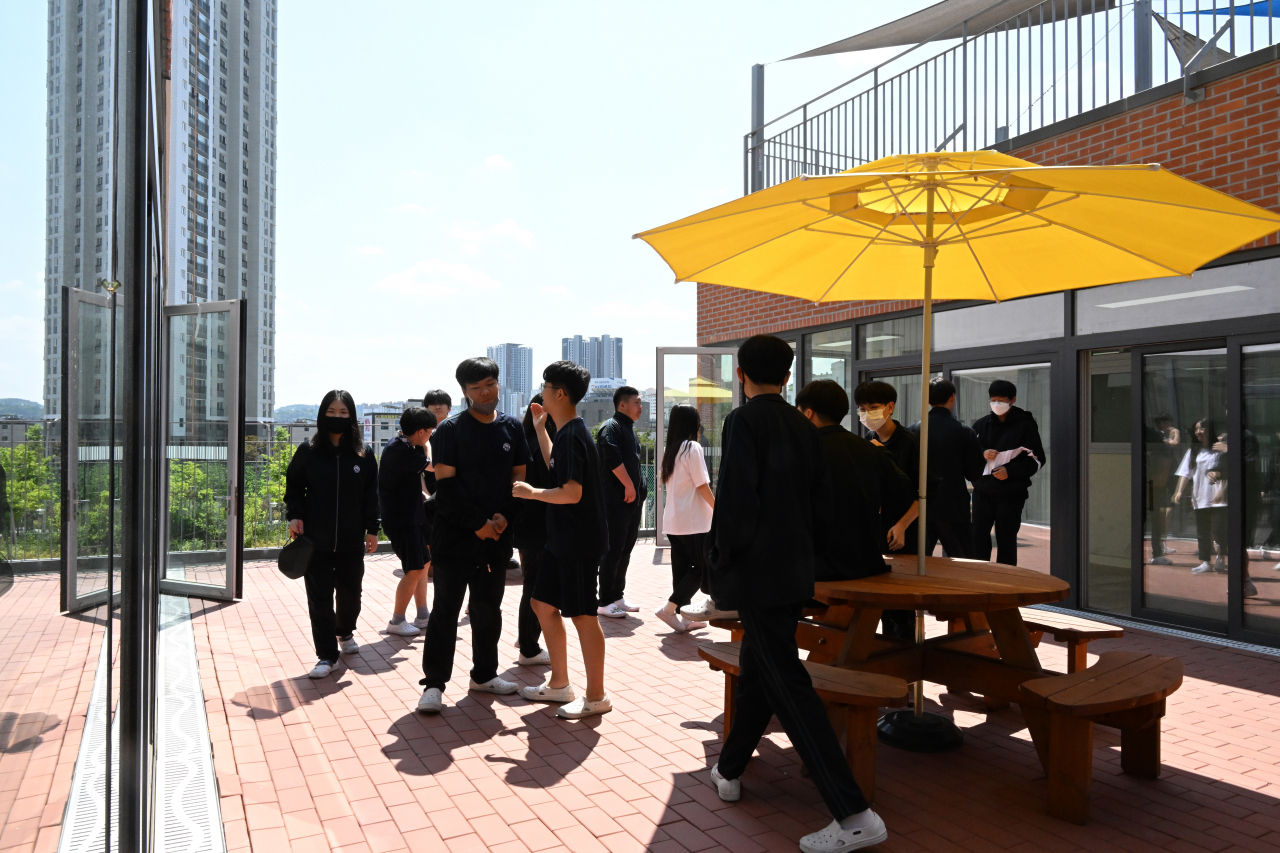 |
Students enjoy a breath of fresh air during a 15-minute recess in a courtyard at Singil Middle School. (Im Se-jun/The Korea Herald) |
When the middle school opened in 2021 in Yeongdeungpo-gu, it immediately brought attention to the Singil-dong neighborhood, which had lagged behind in development until high-rise apartments were built as part of the city's New Town redevelopment project for the area in 2005.
“The school became so popular, so even more people moved to the town in the hopes of sending their kids here. The school opened with 24 classes, but now it has expanded to 29 classes due to the school's popularity,” Shin said.
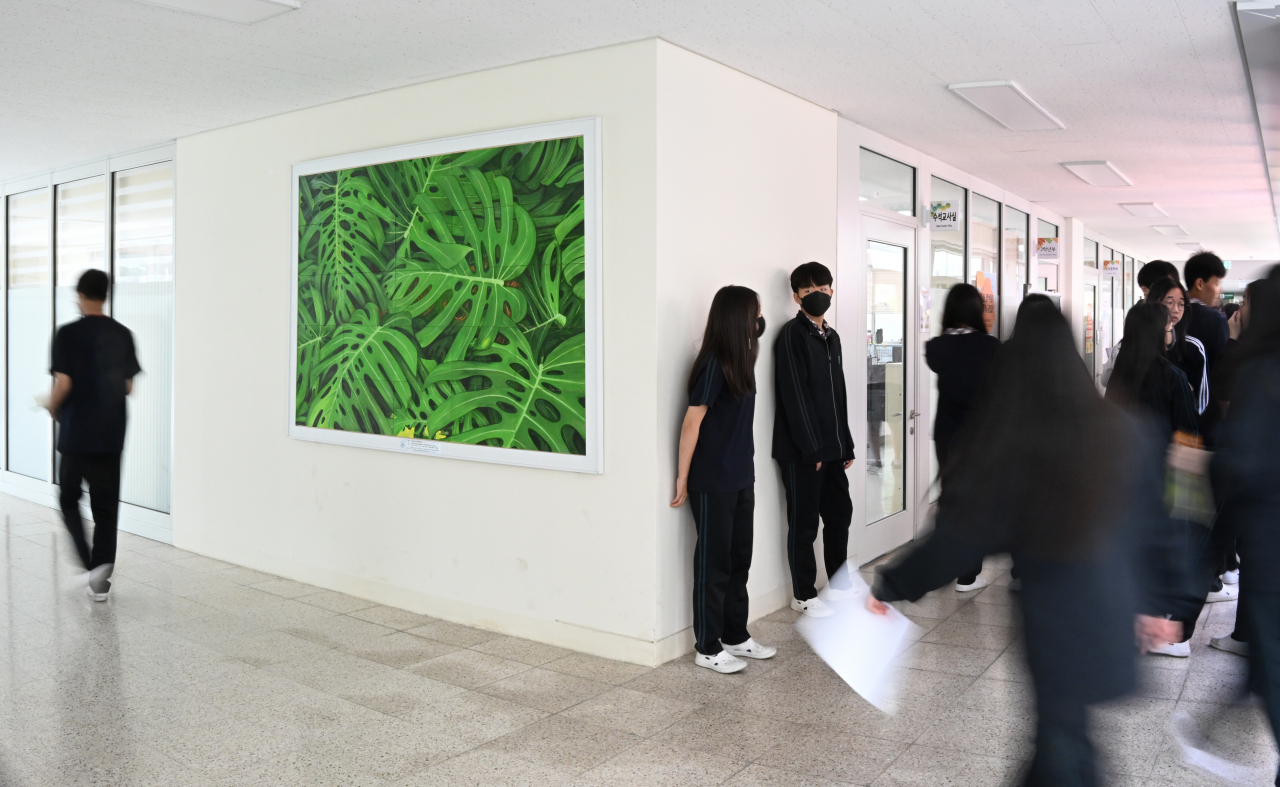 |
Students mingle between classes in the hallway on the second floor of Singil Middle School. (Im Se-jun/The Korea Herald) |
When the design by architect Lee Hyun-woo, founder of 2JIP, an architecture office based in Seoul, was selected for the school in 2018, it came as surprise to many. Previously, schools were typically built following a standardized design. School buildings here have often been compared to prisons for their seemingly identical designs.
“I thought of a school that would give a sense of intimacy to people living in the apartment complexes with its house-shaped design. I also wanted to provide outdoor spaces for students, such as courtyards, where they can spend time outside,” Lee said. From a distance, the school looks like a cluster of small houses nestled in a forest of identical high-rise apartment buildings.
Singil Middle School is the sole middle school in the Singil New Town area. It opened after residents pleaded with the Ministry of Education for a new middle school following the influx of younger residents. Before Singil Middle School opened, students were attending another middle school some 3 kilometers away.
Singil Middle School's design has won multiple awards. It was the recipient of the 2022 Korean Architecture Award, 2022 Seoul Architecture Award and 2021 Public Building Award of Korea.
 |
Kids play soccer on a field at Singil Middle School. The school is located amid the high-rise apartment buildings of Singil-dong in Seoul. (Im Se-jun/The Korea Herald) |
Hope for changes in school design
Lee said it has not been long since changes in school designs have become more accepted in South Korea, where many schools are still built based on a standardized design. He has worked on three school projects in Seoul and Gyeonggi Province, including Singil Middle School. The other two schools are Konghang High School in southwestern Seoul, completed in 2019, and an elementary school in Yeoncheon-gun, Gyeonggi Province, construction of which began in May.
Changes in the school designs became possible in 2016 when the Seoul Metropolitan Office of Education steered its policy from a bidding system prioritizing cost efficiency to a design competition in an effort to diversify school facilities and improve the educational environment.
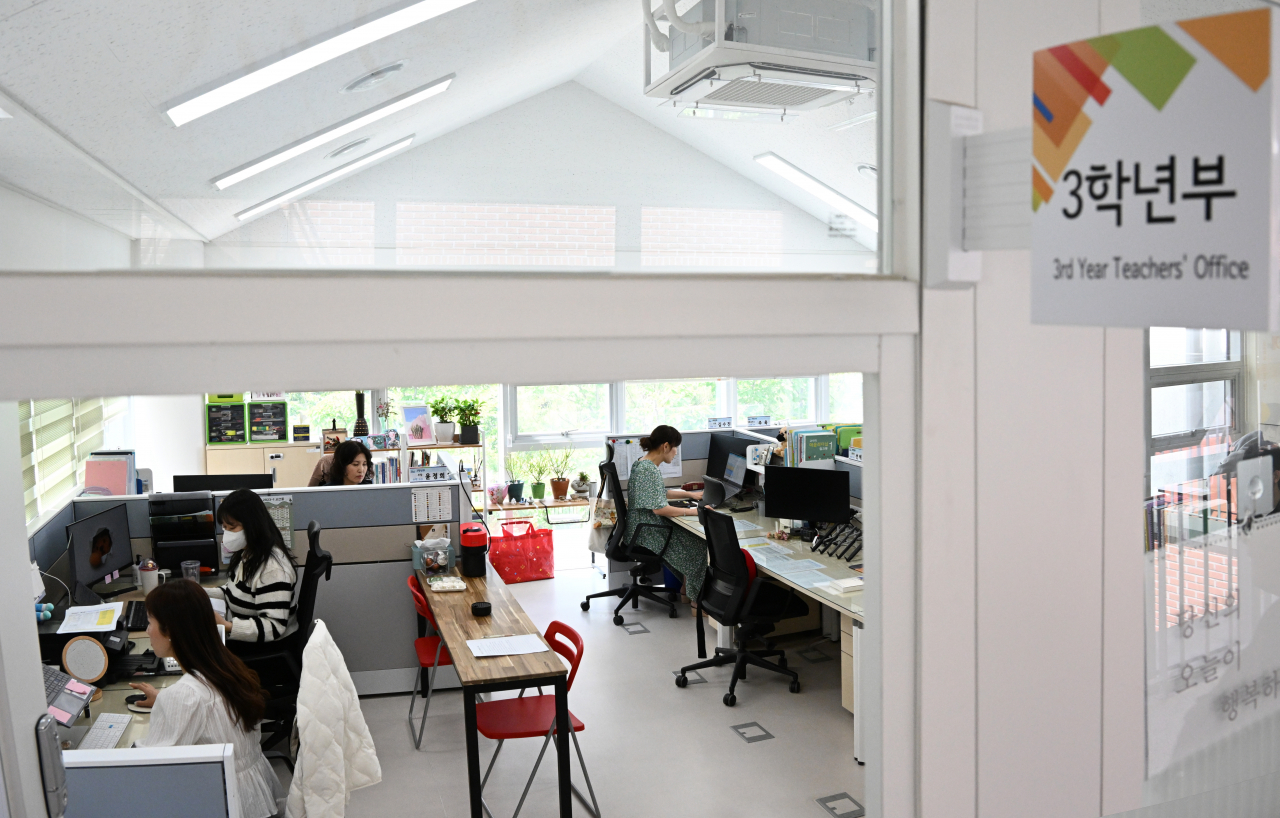 |
A teachers' office at Singil Middle School (Im Se-jun/The Korea Herald) |
“Singil Middle School saw success as many factors played out well: the architect who initiated the creative design with strong commitment to his design, the jury members who were open to a new attempt and the city officials who had the passion to bring change to a school building,” said a city official surnamed Park, who was involved in the process.
Lee said schools are allocated relatively small amounts of funding for design and construction compared to other public buildings built by the government. For Singil Middle School, around 650,000 won ($492) was spent per 3.3 square meters.
"I have to find a balance between not straying too much from the standardized design and giving it a unique design," Lee said.
What is important as an architect, Lee said, is to have empathy for the occupants – to think in their shoes and learn what they would need or want in the space. That is the fundamental approach to designing a space.
When he finds it hard to read students' minds while designing school spaces, Lee seeks help from his daughter. His daughter was a middle school student when he was working on the Singil Middle School project.
"I used to ask her, 'Would your friends like this kind of space or color?' And she would give me clues," he recalled.
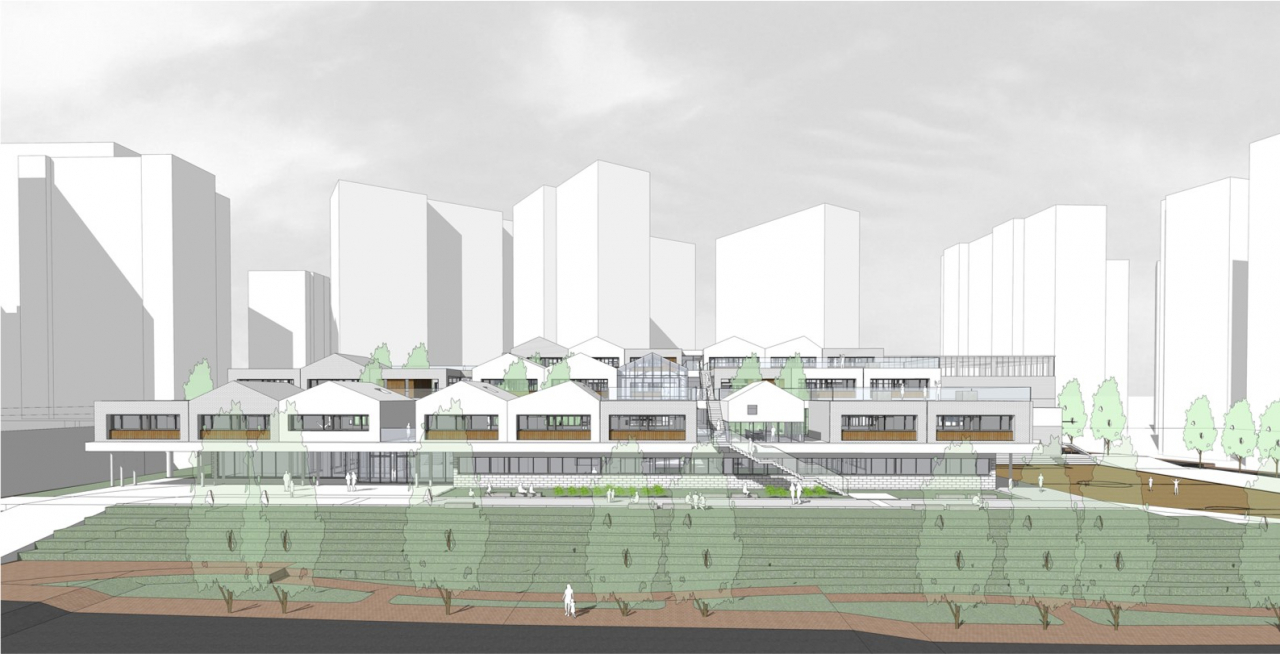 |
A conceptual drawing of Singil Middle School by architect Lee Hyun-woo (Lee Hyun-woo) |
Designing three schools, Lee also felt empathy for students spending 12 years of their lives in school -- a critical period while growing up -- and has compassion for Korean students who spend most of their teen years competing against each other for the same goal of getting into a good college.
The total expenditures necessary to educate a child from the age of 6 to 15 in Korea stood at $144,485 on average last year, significantly above the OECD average of $105,502, according to a report titled "Education at a Glance 2022: OECD Indicators."
“It seems we forget to enjoy the moment, compelled to prepare for our next stage in life. Students spend time preparing to get into a college, and later getting ready to get a good job. Then we all think about how we can better be prepared for a comfortable life in our old age."
“I don’t want kids to think of their time in school as something just to be endured before reaching the next stage of life. I want them to fully enjoy this moment in their lives as a teenager in the school,” he said.
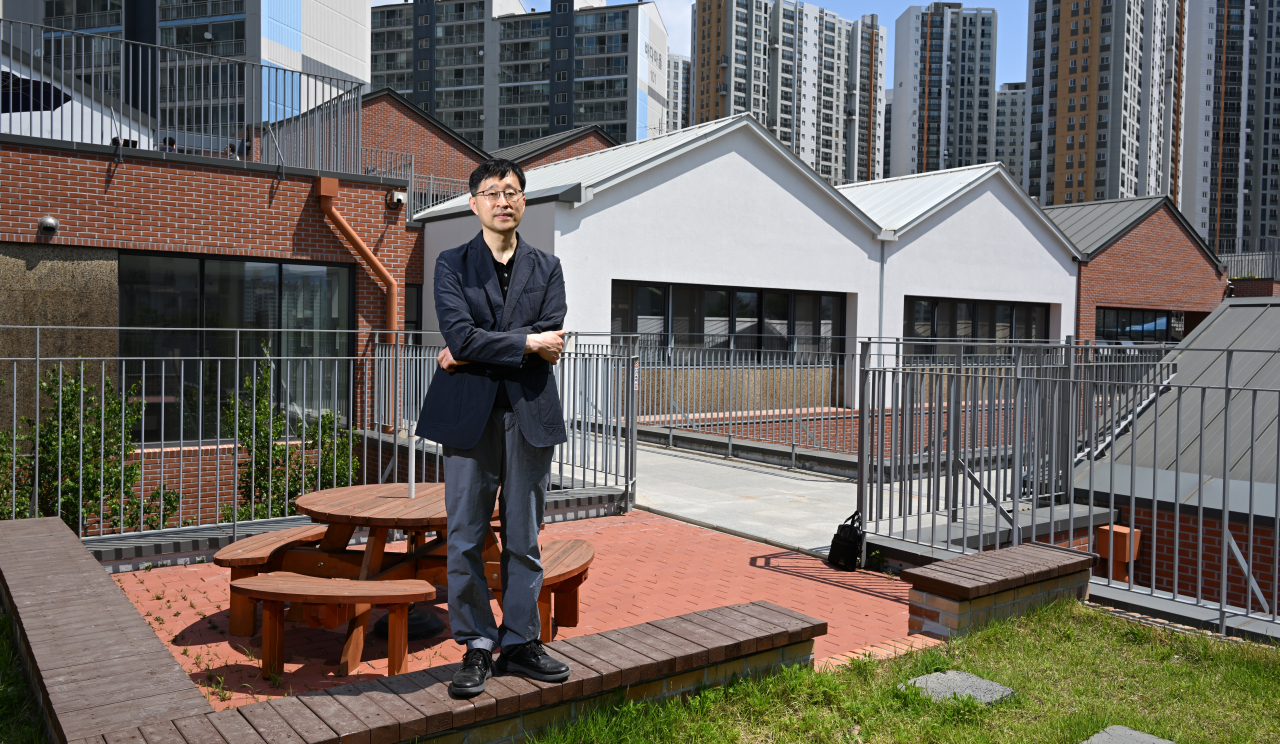 |
Lee Hyun-woo poses for a photo on the roof of Singil Middle School on May 19. (Im Se-jun/The Korea Herald) |
This article is the fifth in a seven-part series exploring the role and impact of public architecture in civic life. -- Ed.




![[Weekender] Korea's traditional sauce culture gains global recognition](http://res.heraldm.com/phpwas/restmb_idxmake.php?idx=644&simg=/content/image/2024/11/21/20241121050153_0.jpg)


